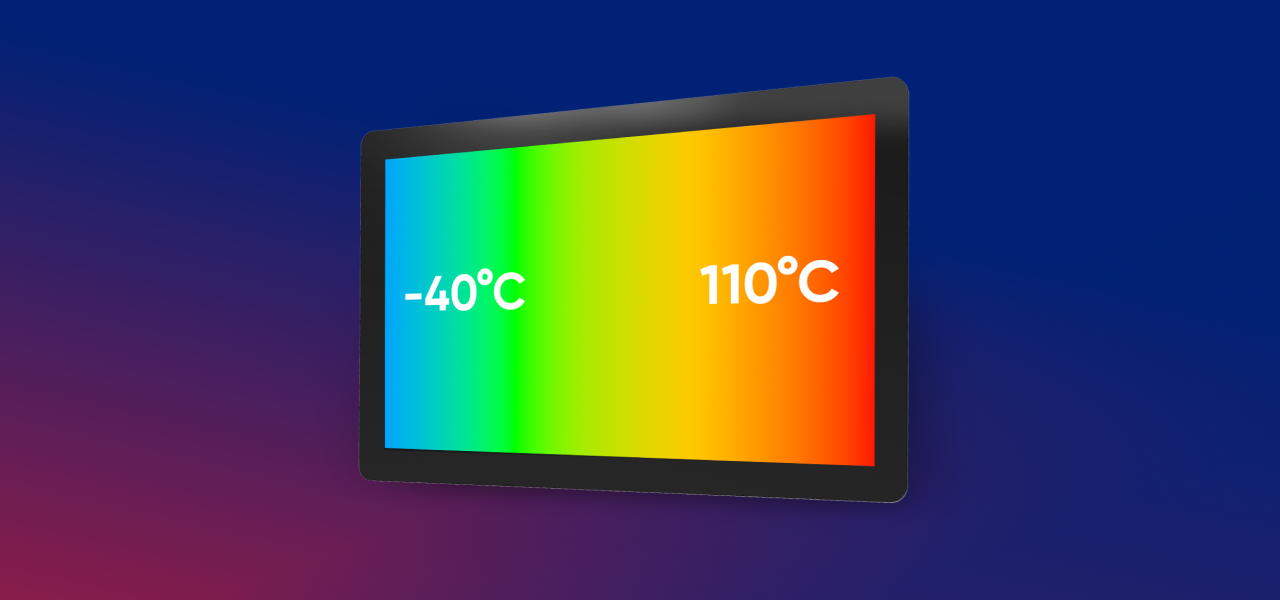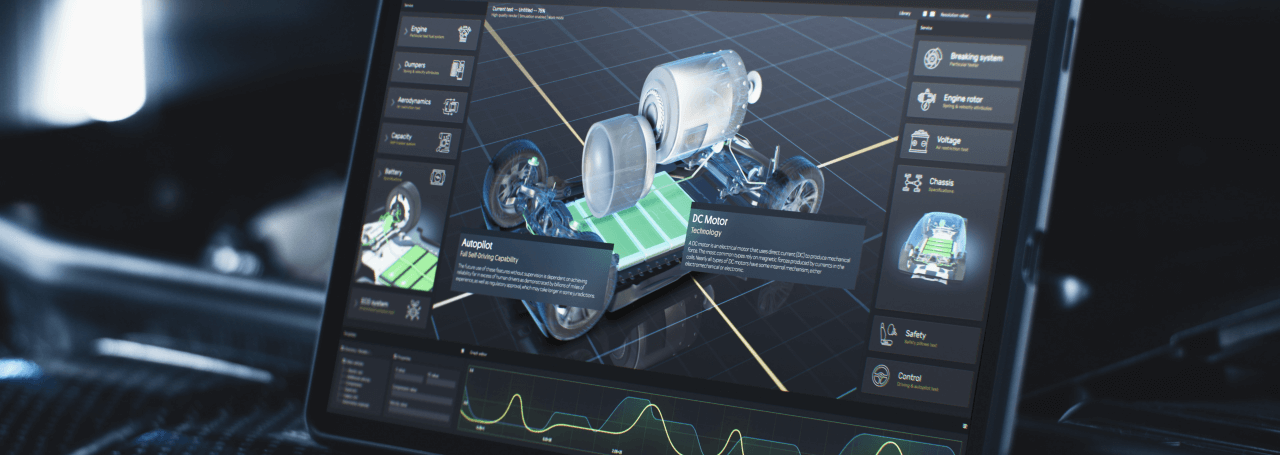From factory floors to outdoor kiosks, displays rarely operate in climate-controlled comfort. Heat waves, frosty mornings, and sudden shifts between them put LCD modules under constant stress. Engineers know that the choice of display is not just about resolution or brightness—temperature resilience can be the difference between a flawless user experience and premature device failure.
In this article, we look at how LCDs behave under temperature extremes, what risks designers need to anticipate, and which technical solutions can safeguard performance in demanding environments.
Operating temperature range of LCD displays
LCD displays function through a delicate balance of liquid crystal molecules positioned between two polarizing filters. These crystals maintain their operational properties within specific temperature boundaries, typically ranging from -20°C to +70°C for standard industrial-grade panels. Consumer displays, however, operate within narrower limits of 0°C to 50°C, making them unsuitable for demanding industrial applications.
The temperature range directly impacts the liquid crystal’s nematic phase, where molecules can effectively control light transmission through voltage manipulation. Industrial environments require displays that maintain this crucial phase across broader temperature variations. Riverdi’s standard touchscreens reliably operate from -20°C to 70°C, with extended models reaching -30°C to 85°C and specialized variants functioning from -40°C up to 110°C surface temperature. This versatility ensures consistent performance across manufacturing floors, outdoor installations, and automotive applications where temperature fluctuations are unavoidable.
Temperature-related issues and risks
Temperature extremes create distinct challenges for LCD technology. When liquid crystals exceed their upper temperature threshold, they transition from the nematic phase to an isotropic phase, causing the display to lose its ability to control light polarization. This phenomenon renders pixels uncontrollable, effectively disabling the display until temperatures return to acceptable levels.
Real-world applications demonstrate these risks clearly. A parcel locker manufacturer initially selected low-cost displays tested only in laboratory conditions at -20°C to 50°C. During summer use, direct sunlight heated the display surface to 90°C, triggering complete display failure. The consumer-grade glass couldn’t maintain the liquid crystal’s nematic phase at these elevated temperatures, resulting in the blackening defect where screens become completely unusable.
Damage caused by overheating
Overheating presents immediate and long-term risks to LCD displays. The blackout phenomenon occurs when surface temperatures exceed the display’s rated maximum, typically happening when standard 50°C-rated displays encounter direct sunlight exposure. Solar radiation can raise surface temperatures by 40-50°C above ambient conditions, pushing displays well beyond their operational limits.
Beyond temporary blackouts, sustained high temperatures accelerate component degradation. UV exposure compounds these effects by breaking down polarizers and touch sensors over time. The backlight system suffers particularly, with LED lifespans dropping from the typical 50,000-100,000 hours to significantly shorter periods when consistently operated above recommended temperatures. Heat accumulation also affects the optical bonding layers, potentially causing delamination between the touchscreen and TFT panel, creating air gaps that further reduce display clarity and touch responsiveness.
Effects of cold temperatures and device protection
Cold temperatures present different but equally significant challenges. Below -20°C, standard liquid crystals become increasingly thickened, dramatically slowing response times. Pixel switching that normally occurs in milliseconds can extend to full seconds, creating ghosting effects and making dynamic content impossible to display properly. The contrast ratio deteriorates progressively as temperatures drop, reducing readability even when the display remains technically functional.
Moisture infiltration becomes critical in cold environments. Temperature cycling causes repeated expansion and contraction of display components, potentially breaking seals and allowing moisture ingress. When this moisture freezes, it expands and can physically damage the LCD cell structure. Industrial-grade displays address these issues through enhanced sealing methods, including specialized gaskets and frames that maintain compression against the housing even during extreme temperature variations.
Technical solutions for extreme conditions
Engineers have developed multiple approaches to extend LCD operating ranges. Hi-Tni (High Temperature Twisted Nematic-Isotropic) glass technology represents a crucial advancement, maintaining the liquid crystal’s nematic phase at surface temperatures up to 110°C. This specialized glass formulation modifies the clearing point where crystals transition to the isotropic phase, providing substantial headroom for outdoor and high-temperature applications.
Thermal management extends beyond material selection. Separating power supplies for the TFT panel and backlight enables intelligent power management strategies. During standby periods, the backlight can dim or deactivate while maintaining touchscreen functionality at approximately 10mA consumption. This approach reduces heat generation while preserving battery life in remote installations using solar power or battery systems.
Optical bonding eliminates air gaps between display layers, improving thermal conductivity and reducing internal reflections. Combined with anti-reflective coatings that reduce surface reflection from 4-5% to 0.5%, these modifications enhance readability while managing heat removal more effectively than traditional air-gapped constructions.
Operating temperatures:
| Min | Max | |
| Industrial standard | -20°C | 70°C |
| Hi-Tni | -40°C | 110°C (surface) |
Choosing the right modules and new technologies
Module selection requires careful consideration of operating environments. Geographic location determines baseline temperature requirements—Nordic installations demand exceptional cold performance while Middle Eastern applications prioritize heat resistance. Engineers must account for both ambient conditions and thermal accumulation from sunlight exposure when specifying display parameters.
Brightness levels directly correlate with temperature management needs. High-brightness displays generating 1000 candelas or more produce substantial heat internally. Proper thermal design incorporating heat sinks, ventilation channels, or active cooling becomes essential for maintaining optimal operating temperatures. The trade-off between visibility and thermal load requires careful balancing based on specific application requirements. In other words, aligning display specifications with real operating conditions rather than relying solely on datasheet numbers is essential for meticulous engineering.
Criteria for selecting LCD displays
The selection process begins with accurate temperature range assessment. Laboratory testing at ambient temperatures fails to replicate real-world conditions where solar loading adds 40-50°C to surface temperatures. Engineers should specify displays rated at least 30°C above expected maximum ambient temperatures for outdoor applications. Industrial certifications provide additional validation, with EMC compliance ensuring electromagnetic interference won’t affect temperature sensors or control systems.
Physical durability correlates with temperature resistance. Displays featuring 1.8mm to 15mm glass thickness options provide vandal resistance while maintaining thermal stability. Thicker glass options require compatible touch controllers calibrated for increased substrate thickness. UV-resistant materials in polarizers, adhesives, and coatings prevent degradation that could compromise temperature performance over the display’s operational lifetime.
OLED as an alternative for harsh environments
OLED technology offers distinct advantages for specific extreme environments. Self-emissive pixels eliminate backlighting requirements, reducing heat generation in high-brightness applications. OLED displays maintain faster response times at low temperatures compared to LCDs, as they don’t rely on liquid crystal molecule movement. Operating ranges typically span -40°C to 85°C, with superior cold-weather performance making them attractive for Arctic or high-altitude installations.
However, OLED faces its own temperature-related challenges. High temperatures accelerate organic material degradation, potentially reducing operational lifetime from years to months in extreme heat. Image burn-in becomes more pronounced at elevated temperatures, limiting suitability for static content display.
The more practical choice? OLED’s higher cost per unit area and limited availability in larger sizes often make industrial-grade LCDs with appropriate temperature ratings the better fit for most harsh-environment applications. Manufacturing maturity and established supply chains further favor LCD technology for industrial applications requiring long-term availability and support.
Need to carefully balance your technological decisions?
Get in touch with our engineering team—together we will achieve maximum efficiency for your specific project.
DISCOVER OUR
Whitepaper
Achieve the perfect user-display interaction with the right Touch Sensor IC. Ever faced issues with phantom touch events or certification? Boost your R&D like a pro with our Whitepaper!



